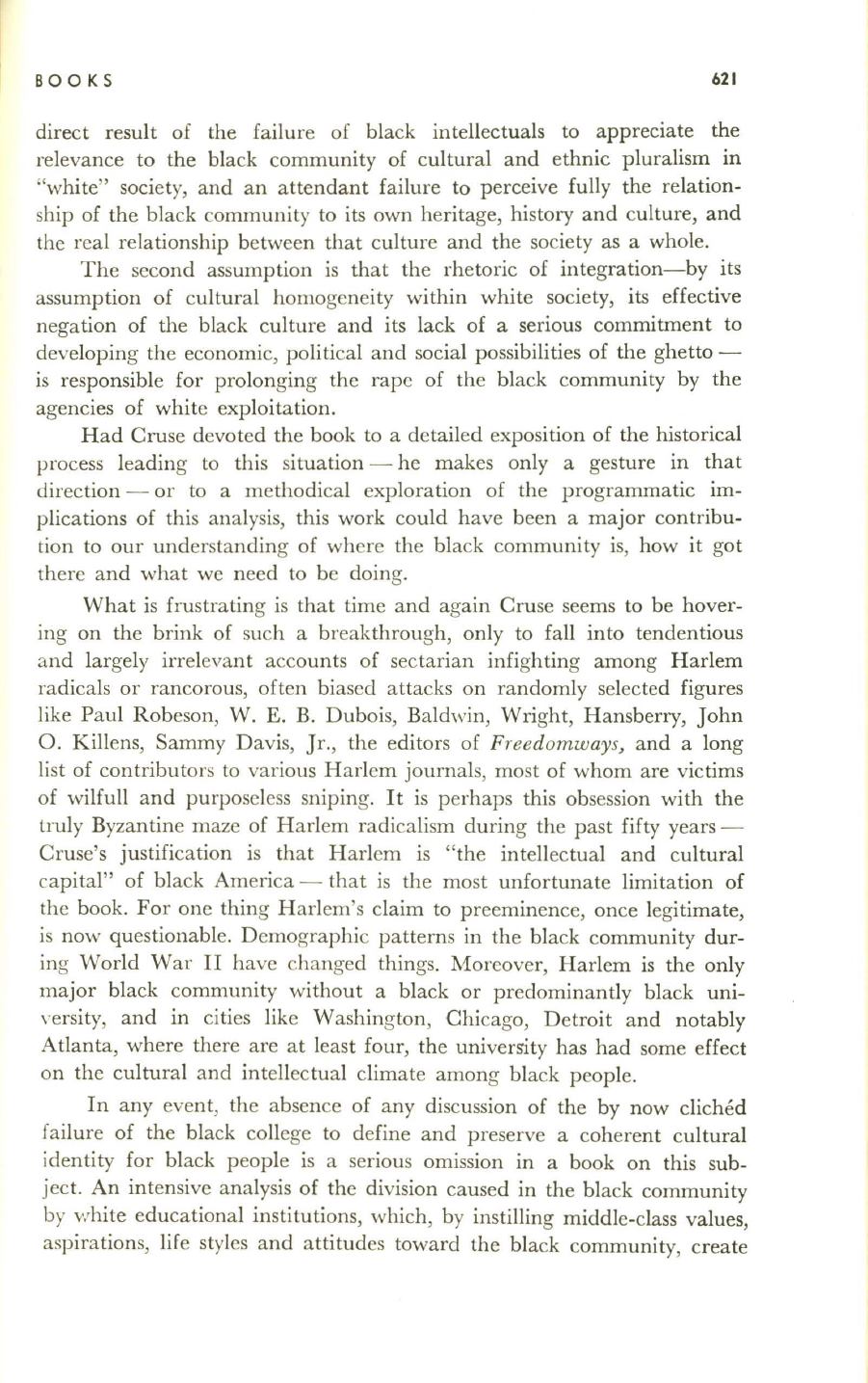
so
0 KS
621
direct result of the failure of black intellectuals to appreciate the
relevance to the black community of cultural and ethnic pluralism in
"white" society, and an attendant failure to perceive fully the relation–
ship of the black community to its own heritage, history and culture, and
the real relationship between that culture and the society as a whole.
The second assumption is that the rhetoric of integration-by its
assumption of cultural homogeneity within white society, its effective
negation of the black culture and its lack of a serious commitment to
developing the economic, political and social possibilities of the ghetto -
is responsible for prolonging the rape of the black community by the
agencies of white exploitation.
Had Cruse devoted the book to a detailed exposition of the historical
process leading to this situation - he makes only a gesture in that
direction - or to a methodical exploration of the programmatic im–
plications of this analysis, this work could have been a major contribu–
tion to our understanding of where the black community is, how it got
there and what we need to be doing.
What is frustrating is that time and again Cruse seems to be hover–
ing on the brink of such a breakthrough, only to fall into tendentious
and largely irrelevant accounts of sectarian infighting among Harlem
radicals or rancorous, often biased attacks on randomly selected figures
like Paul Robeson, W. E.
B.
Dubois, Baldwin, Wright, Hansberry, John
O. Killens, Sammy Davis, Jr., the editors of
Freedomways,
and a long
list of contributors to various Harlem journals, most of whom are victims
of wilfull and purposeless sniping. It is perhaps this obsession with the
truly Byzantine maze of Harlem radicalism during the past fifty years–
Cruse's justification is that Harlem is "the intellectual and cultural
capital" of black America - that is the most unfortunate limitation of
the book. For one thing Harlem's claim to preeminence, once legitimate,
is now questionable. Demographic patterns in the black community dur–
ing World War II have changed things. Moreover, Harlem is the only
major black community without a black or predominantly black uni–
\'ersity, and in cities like Washington, Chicago, Detroit and notably
Atlanta, where there are at least four, the university has had some effect
on the cultural and intellectual climate among black people.
In any event, the absence of any discussion of the by now cliched
failure of the black college to define and preserve a coherent cultural
identity for black people is a serious omission in a book on this sub–
ject. An intensive analysis of the division caused in the black community
by white educational institutions, which, by instilling middle-class values,
aspirations, life styles and attitudes toward the black community, create


